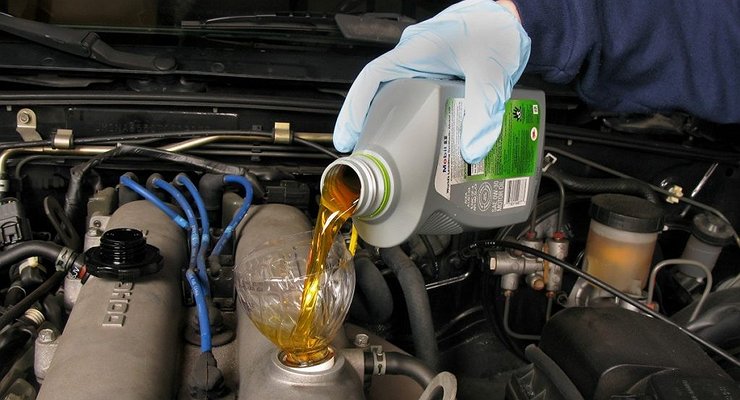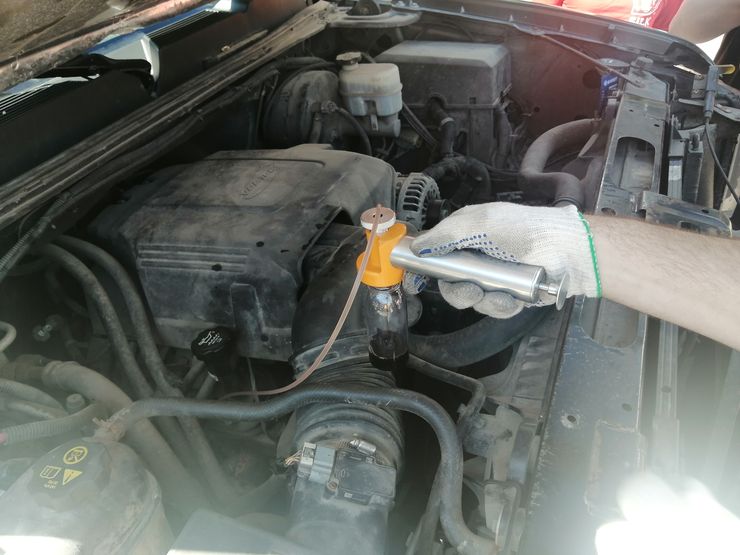Why Korean cars can’t use 10W40 oil instead of 5W30
- August 31, 2022
- 0
Many car owners like to go to various experiments with their car to improve their performance. But the internet tips from experienced people do not always pass without
Many car owners like to go to various experiments with their car to improve their performance. But the internet tips from experienced people do not always pass without

The following opinion is quite widespread among Russian motorists (especially in the southern parts of the country). In the summer, when the heat on the street turns, ordinary engine oil becomes too liquid and poorly lubricates the internal surfaces of the engine. As a result, engine wear would increase. To counteract this problem, it is suggested to fill it with oil with a viscosity slightly higher than that recommended by the manufacturer for the summer period. For example, instead of 5W30 or 0W20, use 10W40.
Most often, this method is used in practice by owners of non-new cars, which are no longer covered by the manufacturer’s warranty. By filling the engines of their cars with thicker oil “before the summer”, they try to extend the life of the power units. At the same time, they are not ashamed of the fact that at any air temperature, the operating temperature of a warm engine is at least above 90ºС. And in the combustion chamber, the oil comes into contact with metal surfaces heated to 400ºС and above. With such entrances, it does not matter at all: what is the air temperature overboard: + 40ºС or -40ºС. But such arguments are simply ignored by supporters of a thicker oil. Yes, indeed, in nature there are engines that can easily withstand such ridicule.
And there are units that are much less hardy. These include, in particular, 2 and 2.4 liter naturally aspirated petrol engines of the Gamma family, which have been installed on many Hyundai and Kia models. Their oil pumps, as practice shows, are extremely sensitive to the viscosity of the pumped liquid. And this “vulnerability” increases as the mileage of the car increases, with gradual and completely natural wear of the pump parts. The manufacturer recommends an oil viscosity of at least 5W30 for these engines. When replaced by a thicker 10W40, the following happens.
The pump has to pump a more viscous substance and can no longer cope with its task. So at idle it can more or less satisfactorily push liquid through the system, but at speeds above 3000 per minute it is no longer there. As a result, oil deficiency occurs in the engine. It most deplorably affects the cylinder-piston group: in the absence of the required volumes of lubrication, monstrous wear of the rings and cylinder walls begins. And in the connecting rod-crankshaft construction, the liner works almost “dry”. And eventually turns around. The overall result is that the middle-aged motor is sent for overhaul much sooner than it could. The dubious result of attempts to make engine life easier in the heat…

The following opinion is quite widespread among Russian motorists (especially in the southern parts of the country). In the summer, when the heat on the street turns, ordinary engine oil becomes too liquid and poorly lubricates the internal surfaces of the engine. As a result, engine wear would increase. To counteract this disaster, it is suggested to fill it with oil with a viscosity slightly higher than recommended by the manufacturer for the summer period. For example, instead of 5W30 or 0W20, use 10W40.
Most often, this method is used in practice by owners of non-new cars, which are no longer covered by the manufacturer’s warranty. By filling the engines of their cars with thicker oil “before the summer”, they try to extend the life of the power units. At the same time, they are not ashamed of the fact that at any air temperature, the operating temperature of a warm engine is at least above 90ºС. And in the combustion chamber, the oil comes into contact with metal surfaces heated to 400ºС and above. With such entrances, it does not matter at all: what is the air temperature overboard: + 40ºС or -40ºС. But such arguments are simply ignored by supporters of a thicker oil. Yes, indeed, in nature there are engines that can easily withstand such ridicule.
And there are units that are much less hardy. These include, in particular, 2 and 2.4 liter naturally aspirated petrol engines of the Gamma family, which have been installed on many Hyundai and Kia models. Their oil pumps, as practice shows, are extremely sensitive to the viscosity of the pumped liquid. And this “vulnerability” increases as the mileage of the car increases, with gradual and completely natural wear of the pump parts. The manufacturer recommends an oil viscosity of at least 5W30 for these engines. When replaced by a thicker 10W40, the following happens.
The pump has to pump a more viscous substance and can no longer cope with its task. So at idle it can more or less satisfactorily push liquid through the system, but at speeds above 3000 per minute it is no longer there. As a result, oil deficiency occurs in the engine. It most deplorably affects the cylinder-piston group: in the absence of the required volumes of lubrication, monstrous wear of the rings and cylinder walls begins. And in the connecting rod-crankshaft construction, the liner works almost “dry”. And eventually turns around. The overall result is that the middle-aged motor is sent for overhaul much sooner than it could. The dubious result of attempts to make engine life easier in the heat…
Source: Avto Vzglyad
I’m Sandra Torres, a passionate journalist and content creator. My specialty lies in covering the latest gadgets, trends and tech news for Div Bracket. With over 5 years of experience as a professional writer, I have built up an impressive portfolio of published works that showcase my expertise in this field.